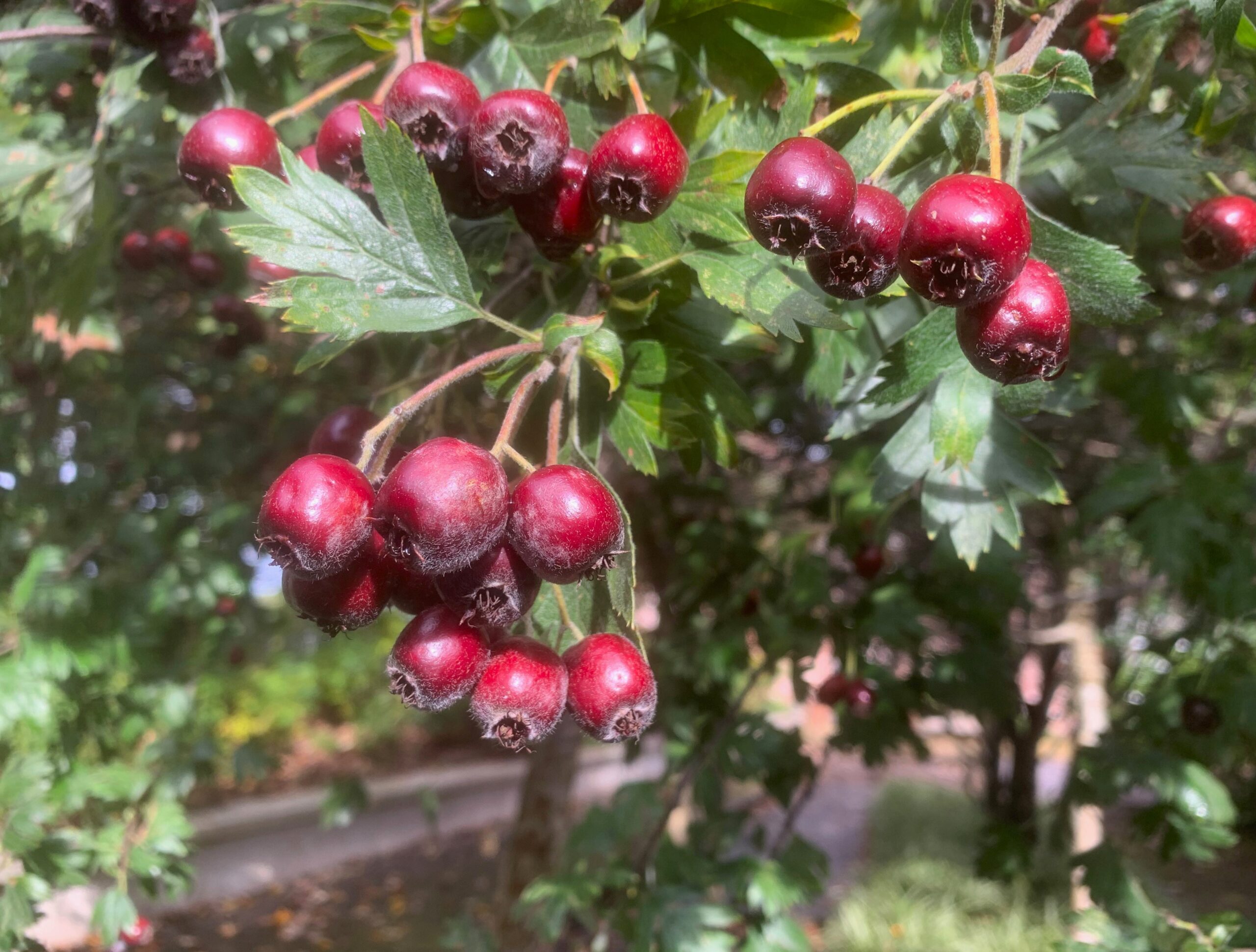Despite the odd cold night and hint of frost, the temperatures have not yet dipped enough to halt the flowering cosmos, calendula and evening primrose, adding to the autumnal colours from the crimson stems of dogwood and the golden witch hazel leaves. The potager is full of bright stems and glossy leaves of chard, winter salad leaves and herbs as well as beetroot, leeks and turnip. These bursts of brightness help to cheer us as the failing light and the shorter days set in.
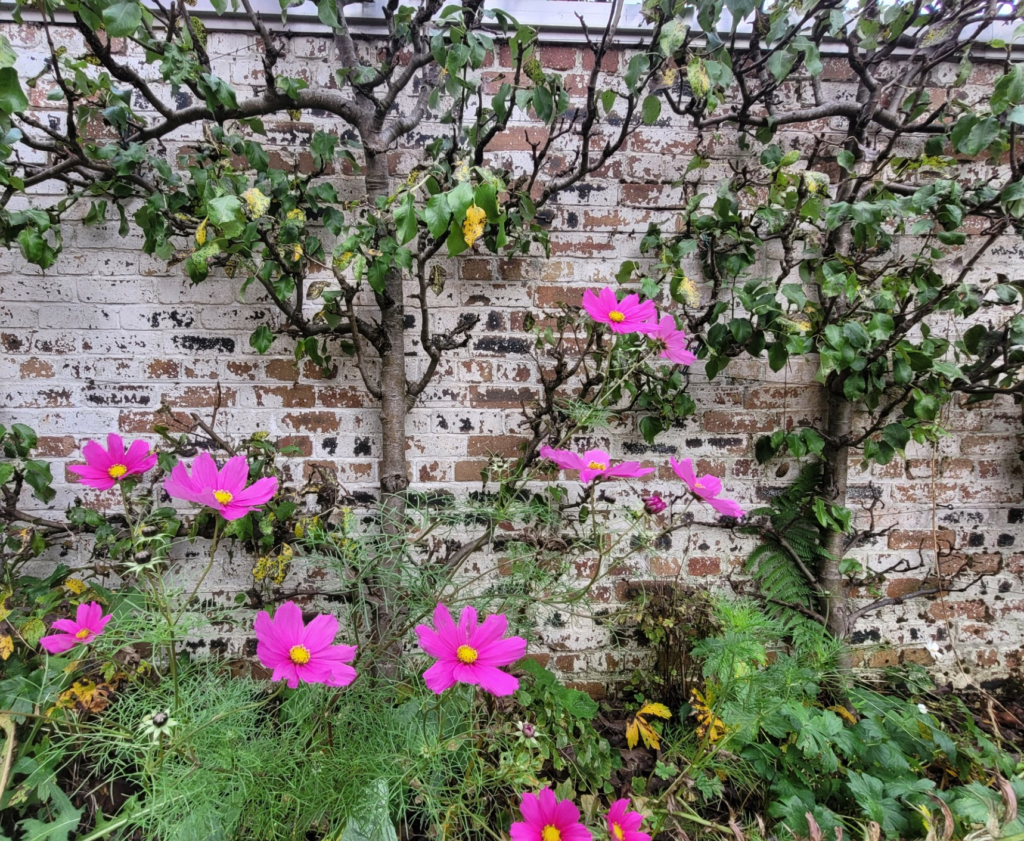
Winter Preparations
This is the time we plan for the winter months, taking in tender pelargoniums and our olive tree to the shelter of an unheated greenhouse. Pots of sedums do not mind the cold but hate the wet weather, so they also come inside for the winter.
We are working away at emptying last year’s leaf mould to use as a mulch around the borders and under trees and shrubs. Before we begin to mulch we must weed and cut back perennials, although we leave some foliage and seed heads for interesting textures, shapes and forms as well as providing food and shelter for wildlife.
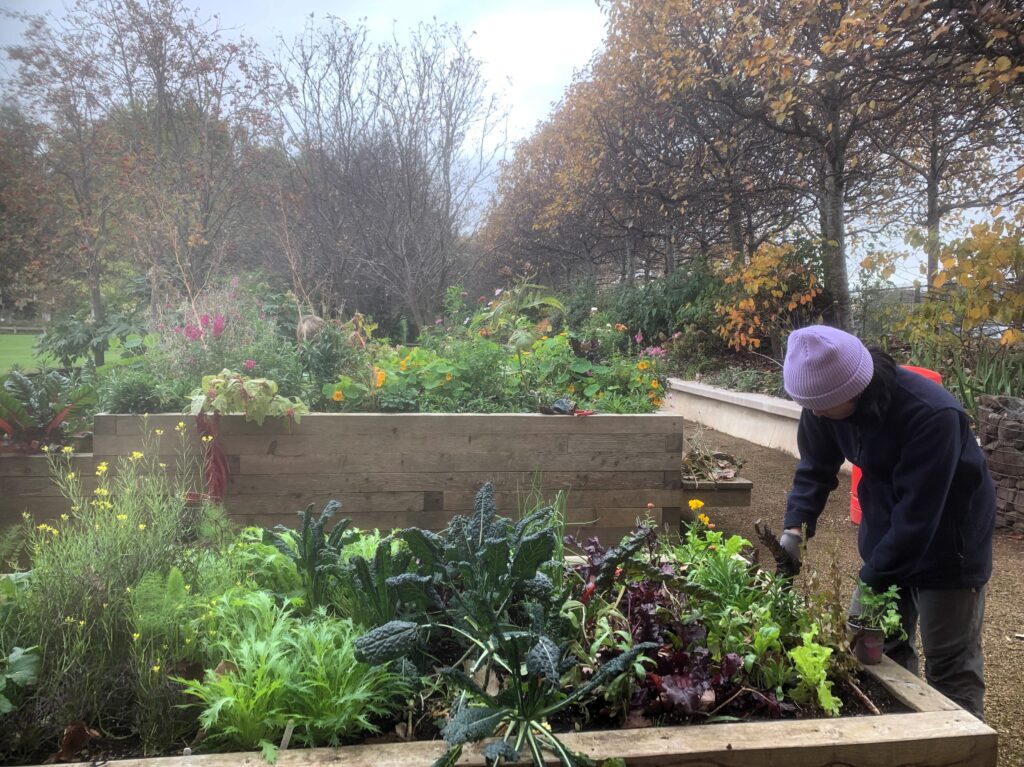
Although we are not aiming to ‘rewild’ The Hidden Gardens – a term used to describe reintroducing natural, self-sustaining ecological processes, leaving the garden to go its own way – we do embrace environmentally friendly and sustainable gardening practices. Removing all maintenance would soon result in an overgrown space that it would be difficult to relax in and enjoy. Instead, we focus on increasing biodiversity by including plants, both native and cultivated, for pollinators and other animals. We embrace wildness where it can flourish in areas of the garden and allow weeds such as dandelion and daisies, clover and self-heal to make our grass interesting for wildlife and us. However, at this time of year we do give the whole lawn a final cut to ensure this mix of plants flourish amongst the grasses for next year’s picnics on the lawn. Edging around the paths keeps them clear and adds definition to the design of this formal part of the garden.
While it is important to clear the paths and walkways of leaves to prevent them from becoming slippery, we do allow drifts and piles of leaves to build up under hedges and trees to provide shelter for overwintering animals. Branches and twigs are added to the dead hedge to provide more habitat.
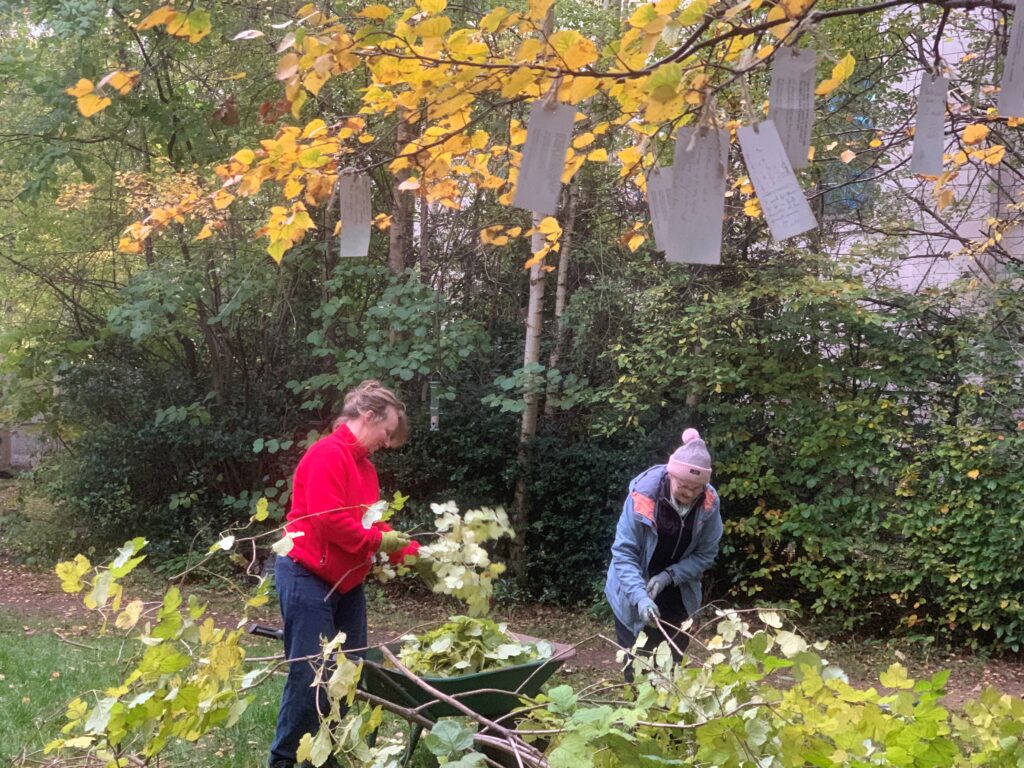
Garden Lights and Wildlife
As days shorten it is tempting to brighten things up with outdoor lighting, but it is important to consider night- time visitors when lighting up your garden. For example, two thirds of common moths have been in decline in recent years and although habitat loss and climate change are the main contributors, light pollution is impactful too. If you do want to light up a part of your garden there are a few things you can do.
Try to minimize disturbance by positioning lights low and point them down to avoid distracting moths and bats. Choose low intensity lights and warmer hues to reduce disruption to wildlife. Solar lighting is cheap, safe and emits a dull glow that is less blinding to animals, although it may not be so efficient in the Scottish winter! Finally, turn off lights when not in use or fit timers so they are only on when necessary.
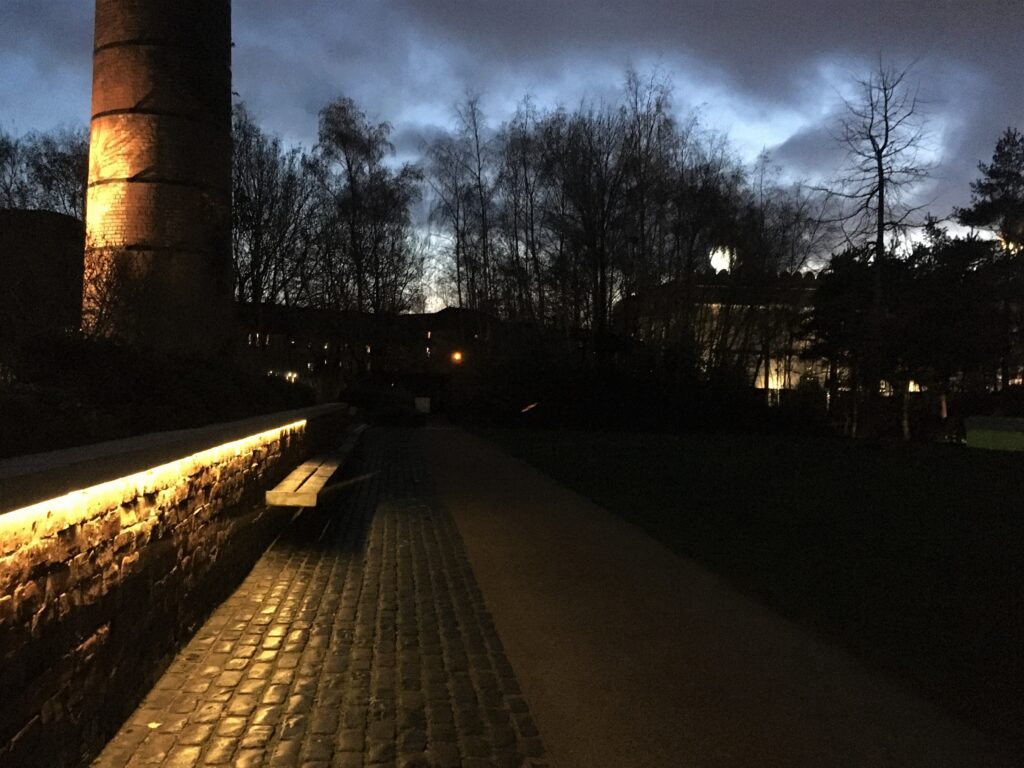
Bird Club
Our keen birdwatchers continue to meet once a month and were rewarded with sightings of Redwing and Fieldfare as well as a large flock of migratory Blackbirds. These birds join our residents to eat the berries on the hawthorns and rowans. If you would like to join us, the next meeting will be on Wednesday 22nd November at 10am. Meet at the chimney, dress for outdoors, and we can provide binoculars but bring them along if you have your own.

